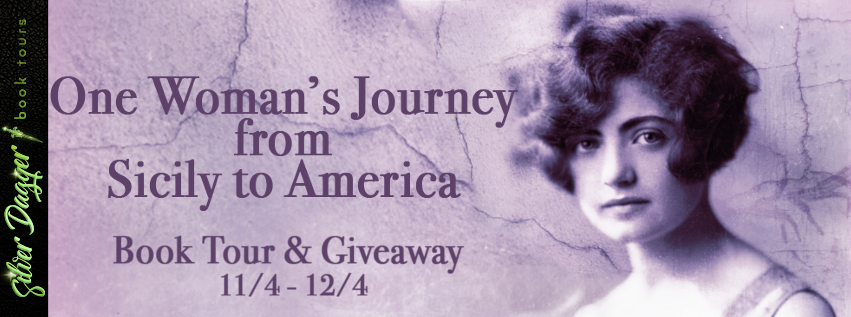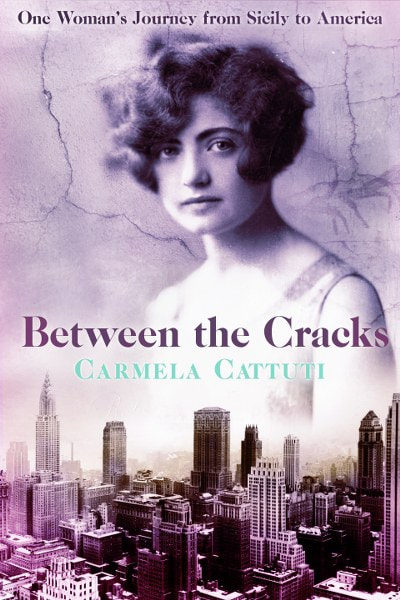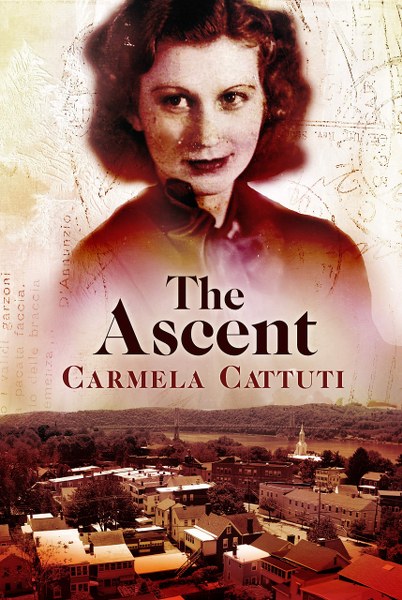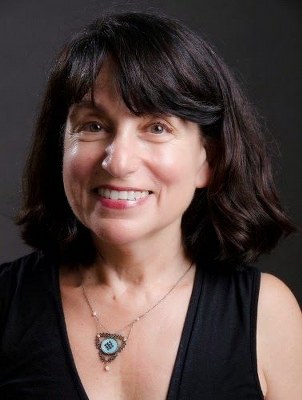Prologue
Across from Italy’s mainland sat the city of Messina like an indomitable fortress. Proud of its solid presence, Messina was the travelers’ first encounter with the island of Sicily. The earthy colors of the buildings and landscape signaled to the visitor or returning Sicilian that Messina and its people belonged to the island, not to any outside political force or cultural tradition. The clang of the donkey-drawn carts and the voices calling out to customers to buy wares in the market added to the music of the city’s sounds. Visitors marveled out loud at the cathedrals and ancient artwork throughout the city, but the locals walked and spoke softly, especially near the narrow slits between the buildings.
Visitors delighted in the snake-like movement of the streets. Most led directly to a famous church or street market but then would slowly veer off in a different direction. They seemed to be designed to intentionally confuse. The city offered no help in arriving at a specific destination.
Ancient buildings were so close together that air barely squeezed through. Residents believed that between the buildings old mysteries sat, holding the true essence of Messina. Townspeople walking close to the openings felt a whisper—not a sound you could hear with your physical ears but heard in your mind. The whisper seemed to convey a yearning that had been imprisoned for hundreds of years. When this happened, people scurried past, heads down.
Hopelessness was the disease that plagued the citizens of Messina during the early twentieth century. The city was so congested with ancient energy it felt like it could explode—and small eruptions did occur. Whenever some of the dark energy needed release, outbursts took place between the locals who were often surly with one another. Their interactions were always based on scarcity, and not just in terms of money. If a resident didn’t show enough respect to a compatriot, there would be a confrontation. If someone had more stylish clothes than another, there would be jealousy over their lack of quality clothes. If a citizen had more leisure time than the next person, there would be gossip about how the person with more time for pleasure was lazy and didn’t deserve the extra time. Daydreaming was frowned upon. What was the point of daydreaming when it was just fantasy and would never come true?
The city’s poor were especially vulnerable to the local mafia and thieves. Many of the men met an early death at the hands of murderers, accidents from factory jobs or shoveling coal, or disease. Women were left to raise children who would most likely not move above their family’s social status. The lack of light between the buildings prevented transcendence or change. This cycle had repeated itself for hundreds of years.
The dark energy of Messina was relentless in its hunger for the human spirit. Feeding off people’s dreams, it left them with doubt, fear, and misery. This shadowy energy prided itself on soul theft. Once the soul was stolen, an overwhelming amount of energy was required to retrieve it—and few in Sicily were familiar with the practice of soul retrieval.
The neighborhoods were filled with children running, playing, singing, and giggling. Youth were not affected by the dark energy. They nourished each other with joy and playfulness; qualities that the malevolent force could not penetrate. The children breathed deeply and dreamed blissful scenarios of the future, but when they returned to their homes, a grim reality met the physical eyes of many: parents yelling, often with a blow or two to a mother’s face or stomach from a drunken father. Imperceptibly, like a slow death from a chronic debilitating disease, the children played less and gave up their bliss and dreams to the heavy energy between the buildings.
The cycle of poverty and abuse branched out through time like a spider unconsciously spinning its web. No police force protected the women or the poor, so the residents lived in fear of everything. Unconsciously, they feared the small spaces between the buildings. At times, a glimmer of light seeped into the locals’ fear. This usually took place in their conversation around sunset, when many would gather in the town piazza.
There was talk of freedom and protection in America. The townspeople heard it was a country where anyone could become rich—but more than that, one could become happy. America equaled happiness. They didn’t know what happiness felt like, but they were sure they could find it if only they could go to America. However, few had true hope of leaving Messina. The spark of light ignited by these conversations flickered but was extinguished at the last spoken word.
It wasn’t that the townspeople couldn’t find a way to get to the New World; there just wasn’t enough determination or will. When the energy between the buildings took their will, the residents were left with despair. While the Black Plague of the Middle Ages had been cured by an awareness of sanitation techniques, the town’s hopelessness could only be cured by cleansing Messina of the dark, heavy energy. This would require a belief that they could reclaim their stolen individuality, comprised of their dreams and hopes. In the end, it was easier to cure the Plague.
The shadowy energy became so thick at times that it took on form. It was a master shape-shifter that became stronger as it gathered human dreams. From the corners of their eyes, the residents would perceive a shape leaning against a building—but when they looked directly at the form, it would vanish. This energy frightened the residents into thinking that they had to stay in the city to remain safe.
The dark energy took whatever it could from the city’s residents. But for 13-year-old Angela Lanza, neither her dreams nor her distinct presence could be stolen. Her awareness had never allowed it. Different from her contemporaries, as she entered adolescence, she was increasingly able to communicate with the unseen. She hadn’t been afraid of the lurking, mysterious force between the buildings, as visions while she slept had instructed her how to oppose this force.
One night, during a dream, two beings appeared to her. Both had shoulder-length, wavy, light hair and faces glowing with a radiance that compelled her to look away at first. Angela realized she was dreaming and looked back at the faces of the beings, with light streaming toward her. These creatures explained that they were infusing her with light for protection against the dark power of the city. If she paid attention to their guidance, she would live to manifest her dreams and aspirations and use her will to do so.
When she awoke, she felt special. Whenever she was sad, alone, or ridiculed, Angela would think of the two friends from her dream and know everything would be all right. She maintained the integrity of her internal space and knew she could not be violated by the shadowy energy. She stayed away from certain buildings without really knowing why. At times, her body seemed to be guided by an unseen, gentle sensation or a distant voice inside her head. She sensed that her time in Messina would be short—that she wasn’t supposed to stay here.
Angela no longer attended school, which was typical of girls of her age. The oldest of three children, it was her responsibility to help her mother. One day, she came home to learn her father who had been a silk trader was killed on the silk trade route and would not return. A few weeks later, a man moved into their house. Her mother explained that he would help with the rent. After a few months, Angela noticed her mother’s belly protruding beneath her homemade, faded smock. Angela pretended she did not notice. She thought of her dream friends and felt less alone.
In December of 1908, the earth made a decision that would change the lives of Messina’s inhabitants forever. The amount of pressure caused by the malevolent energy between the city’s buildings seeped under the earth and into the surrounding area. It nestled itself under Mt. Etna, an active volcano.
After Mt. Etna erupted, causing an earthquake, the city moaned. Screams from the undead, buried under debris, echoed off the skeletons of structural remains. It was as if the earth released a scream that resounded through time, releasing a millennium of abuse and maltreatment.
The morning the earth exploded; Angela was awoken from her sleep. She and her younger brother, Antonio, jumped out of their second-floor window and ran to the edge of the city, where she blacked out and started to drift. She floated above the earth, peering down onto the city. She saw people running, buildings collapsing, and gaping holes in the earth.
Copyright © 2013 by Carmela Cattuti
All rights reserved.
Published by Three Towers Press
An imprint of HenschelHAUS Publishing, Inc.
Alice came to a fork in the road.
‘Which road do I take?’ she asked.
‘Where do you want to go?’ responded the Cheshire Cat.
‘I don’t know,’ Alice answered.
‘Then,’ said the Cat, ‘it doesn’t matter.’
Lewis Carroll, Alice in Wonderland
PROLOGUE
Nelsonville, NY-1930
Angela stood in the kitchen of her fifteen room Queen Anne Victorian home on Morning Glory Avenue. It had been twenty-two years since she had experienced the 1908 earthquake in Messina, Sicily. Her sister, aunt, and grandmother had perished in the disaster. At the time of the earthquake Angela had been an orphan; both parents had died in their early twenties. Angela and her brother, Antonio, were sent to live with their grandmother, while her younger sister, Maria, was sent to live with an aunt. The earthquake had finished her family and now she was standing in a big house without a family to fill it. A few years after she had emigrated from Sicily, Angela had fallen ill with a high fever. Her uterus had ruptured, and the doctors had to remove it, ending her dream of having children.
Angela moved to the dining room and surveyed the dining room table as if it were an artist’s canvas. The white linen tablecloth made the room feel fresh and hopeful. An empty crystal bowl with white candlesticks on either side stood in the center of the table like place holders, waiting for the next gathering to occur. She walked to the buffet and gazed at a photograph of her sister-in-law, Speranza; a tall thin young woman with sunken cheeks peered out from underneath a 1920s style hat and dress. A holy card of the Blessed Mother leaned on the side of the framed photograph. Angela had placed it there so that Speranza was protected by Mary. She had made the ensemble for Speranza’s engagement party ten years ago. When Angela came to America in 1913, Speranza was nine years old and in need of guidance. Angela had lost her sister, so she set her intentions on caring for Speranza, in turn, Speranza helped her learn English.
A few months ago, Speranza suddenly died from a heart ailment. It was a blow that would stay with Angela until she passed from this life. Angela removed the card and leaned it on a nearby crystal bowl and picked up the photograph. Next to Speranza was her husband Salvatore. He had a vacant stare that communicated to the viewer that he was either occupied elsewhere, or he hid who he was. Angela still had Speranza’s three children to care for, but they were not her blood. Angela returned the photograph and holy card back to its original place. Franco’s chair was to the left of the buffet. Angela had made the chair cover with a rose motif material. Franco’s body had made an impression on the worn cushions a ghost of his form that Angela sometimes mistook for Franco. Pipes encrusted with tobacco dangling from a pipe holder like small sculptures sat on a table next to the chair. The room reeked of stale tobacco.
Angela turned and admired the black marble fireplace and two sets of sliding oak French doors. One set lead to her sitting room and the other opened to a spacious hallway with a winding staircase. She gazed at the tapestry of Vatican City that hung over the fireplace; St. Peter’s Basilica stood in the center like a fortress. Franco had purchased it on their 1929 trip to Sicily. They had returned to Messina hoping to find out what had happened to Angela’s sister Maria. Unfortunately, there was no documentation about her death or survival, so Angela returned to New York without any closure about her sister’s fate. Every time she looked at the tapestry, she was reminded about the nebulous part of her life, and the lingering sense that her sister existed in a space between life and death. This is God’s version of purgatory for me, thought Angela. She was not allowed the heaven she thought would befall her once she came to America.
Angela opened the French door to her sitting room. A couch with billowing cushions sat in front of another marble fireplace. Sewing baskets, dress patterns, and cloth remnants were neatly stacked on a worktable. The house had been built for a physician in 1888. There was a large oak cabinet at the end of the room where he had kept medical supplies. Angela now stored material, thread, and knitting needles. She liked that it had been a healing space that served the community. Maintaining good health was a priority in Angela’s life. She made sure her food was fresh and walked every day regardless of the weather. Angela especially liked the walk to St. Mary’s school which sat on top of a hill over-looking the Hudson River.
Next to the sitting room was Franco and Angela’s bedroom. It too had French doors that opened into a light filled room. Over the top of the bed was a half-moon shaped stained glass window and when the light spread its rays through the window Angela felt it was a kiss from the sun. Green, red, and blue rays engulfed the room, giving it a feeling of connection with heaven itself. A third dark marble fireplace, with decorative interlacing gold spirals, stood next to the vanity like an anchor for the light. A multi-tiered wrought iron candle stand stood in front of the dark fireplace. When Angela survived her illness many years ago, Franco had prayed to the Blessed Mother to heal his young wife. This was on a Friday, the next day her fever broke, and she was sitting up in bed when Franco came to visit. Every Friday, Angela lit candles to Mary in appreciation for the miracle.
Angela moved into the spacious hallway. Two large stained-glass windows lined the winding staircase. Bright light penetrated the multi-colored stained glass, casting a rainbow of color on the steps and floor. Under the front window sat her sewing machine. A full-length mirror hung on the wall to the right; a small platform waited in anticipation of the next customer.
Across from the staircase the largest fireplace of them all greeted anyone descending the stairs. It was the same color and design as her bedroom fireplace, but the spirals were intertwined with circles creating a rhythm that reminded Angela of music. Antique gold clocks lined the mantle with figurines depicting eighteenth century dress; ladies with ornate fans shielding their lips and nose, men with white wigs and handkerchiefs dangling from one hand. During the holidays a roaring fire was lit and the aroma of oak and cedar filled the downstairs rooms.
She stood at the bottom of the staircase with her hand on the railing. The rooms upstairs were vacant. There were not enough people to fill them. They had bought the house with the expectation that Speranza and her family might one day live with them. There was another kitchen and bathroom on the second floor; an apartment that waited for occupants that might come one day. After Speranza’s death, Franco had wanted to rent the rooms for extra income, but Angela opposed it.
“Someone will come if we leave the rooms empty,” Angela told Franco.
“No one will come,” Franco said. “We need to ask our friends if they know of a family who needs a place to stay. The extra money will come in handy.”
“Speranza’s children will want to stay with us,” Angela said. “Besides, why have strangers live in our home?”
Since his stroke, Franco did not have patience with children. He favored his nephew, Nunzio, Speranza’s first child. Nunzio was vociferous and more than disruptive at times. Angela tried to tame him, but Franco delighted in Nunzio’s boisterous behavior. When Nunzio played with toy guns, Franco taught him how to shoot. He was amused by his nephew, but Angela felt Nunzio’s behavior, while amusing at age six would be offensive as a teenager, and dangerous in adulthood. If Nunzio lived with her, he would have to change. The two younger children were sweet and needed a mother. Their father was often out-of-work and Angela felt he relinquished his obligation as a parent to his sister Paolina. His sister had catered to Salvatore his entire life. He relied on her to cook his meals, wash his clothes, and clean his house. Salvatore rarely interacted with his children and relied on others to care for them.
Copyright © 2019 by Carmela Cattuti
All rights reserved.
Published by Three Towers Press
An imprint of HenschelHAUS Publishing, Inc.











No comments:
Post a Comment